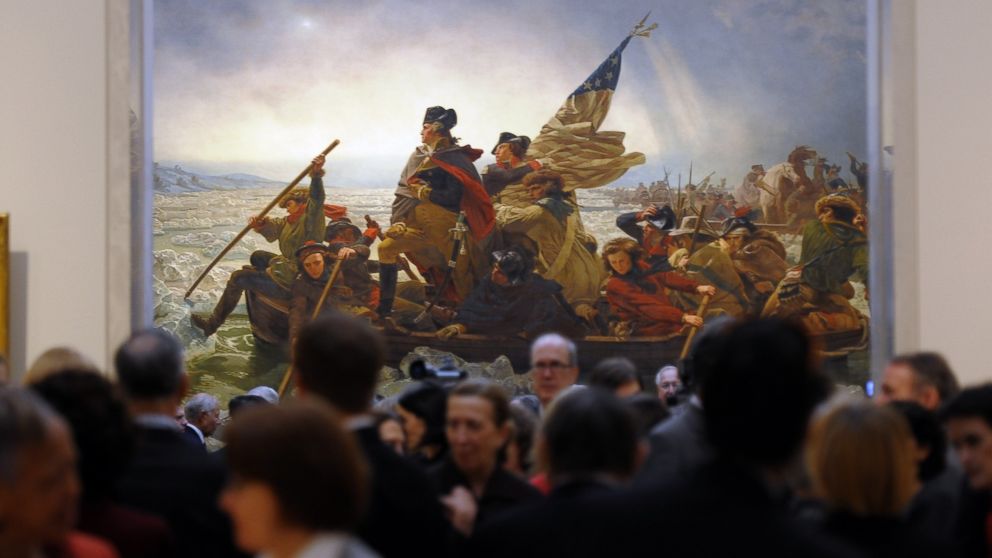'Yankee Doodle Dandy' Explained and Other Revolutionary Facts
Washington probably did stand while crossing Delaware, but not in a rowboat.

— -- Our childhood history books are full of facts about the American Revolution, but not all of them are correct and some compelling details of the struggle have been lost to time.
Here are some fun factoids to toss around tonight while waiting for the fireworks to start.
- The origin of the word Yankee. There are several theories as to the origin of the word, but the prevailing theory is that was a dismissive reference by the British towards American colonists and the Dutch origins of many northeast settlers. It is believed to be a corruption of Janke, or little Jan, a common Dutch name.
- The song "Yankee Doodle Dandy" became popular among the British as well as the rebels. A doodle was a simpleton and the phrase "stuck a feather in his hat and called it macaroni" implied the backwoods bumpkins could put a feather in their coonskin hats and think they were as elegant as European in the latest Italian style -- the "macaroni."
- George Washington, we are told, did not stand in the boat while crossing the Delaware River en route to defeating the Hessians in Trenton despite the iconic painting of the event. He would have fallen into the icy river, we are told.
- Washington surprised the Hessians who were drunk on a Christmas Eve celebration. Far from it. Rather than defeating an inebriated foe, Washington's plan and his troops defeated 1,500 battle-hardened soldiers who were on alert, Fischer writes.
- American casualties during the battle of Trenton were light, but the rebel army was in such bad shape and so poorly provisioned that Fischer estimates that more American soldiers collapsed and died during the battle from starvation, exhaustion or exposure than they did from British bullets.
- Washington followed up his shocking victory at Trenton with another shocker by beating the Brits a few days later at Princeton. But the enlistments of many of his best troops expired on New Year's Eve and Washington had to make an impassioned plea for them to stay six more weeks.
The American army embraced the derisive song and when Gen. Cornwallis' troops surrendered at Yorktown to end the war, they march out of the fort playing "The World Turned Upside Down." They were met by an American band playing "Yankee Doodle Dandy."
Au contraire, says historian David Hatchett Fischer in the Pulitzer Prize winning "Washington's Crossing." It's likely Washington and his entire army stood, but they didn't cross in row boats. Most of Washington's army crossed the ice-filled river in boats with sides that were built to haul cattle. If they sat, they would have sat in a couple inches of icy water. In fact, many of them had to jump up and down in the boats to knock off ice stuck to boat bottoms.
One of the three Hessian regiments stationed at Trenton was standing guard and the other two regiments were in bed -- in full uniform complete with ammunition pouches. Even the post's artillery horses were in their harnesses.
The Hessians responded quickly and fought bravely, but were overwhelmed by attacks from two sides and American artillery on a commanding hill.
Many agreed, and many of those soldiers died.
In a further illustration of how determined the Americans were, many of them had worn out their shoes and were fighting barefoot -- in snow and ice.




